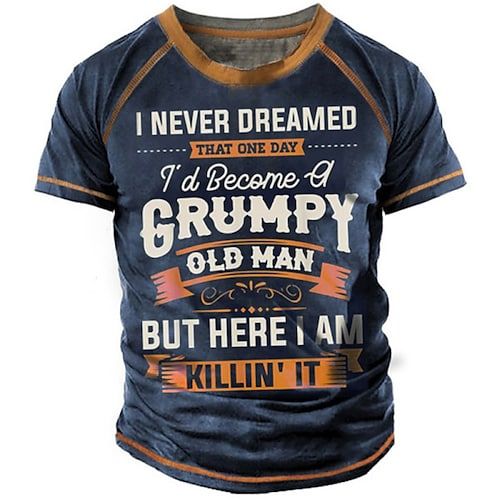Dr. Werhner von Braun,”Father of Rocket Science” and Walt Disney in 1954:
Von Braun worked with Walt Disney on a series of films, which popularized the idea of human space travel in the U.S. and beyond from 1955 to 1957.
He served as technical advisor on three space-related television films that Disney produced in the 1950s. Together, von Braun and Disney used the new medium of television to illustrate how high man might fly on the strength of technology and the spirit of human imagination.
__________
Some background and information:
Wernher von Braun (1912 – 1977) was a German and American aerospace engineer and space architect. He was a member of the Nazi Party and Allgemeine SS, and the leading figure in the development of rocket technology in Nazi Germany and later a pioneer of rocket and space technology in the United States.
As a young man, von Braun worked in Nazi Germany's rocket development program. He helped design and co-developed the V-2 rocket at Peenemünde during World War II. The V-2 became the first artificial object to travel into space on 20 June 1944. Following the war, he was secretly moved to the United States, along with about 1,600 other German scientists, engineers, and technicians, as part of Operation Paperclip. He worked for the United States Army on an intermediate-range ballistic missile program, and he developed the rockets that launched the United States' first space satellite Explorer 1 in 1958. He worked with Walt Disney on a series of films, which popularized the idea of human space travel in the U.S. and beyond from 1955 to 1957.
In 1960, his group was assimilated into NASA, where he served as director of the newly formed Marshall Space Flight Center and as the chief architect of the Saturn V super heavy-lift launch vehicle that propelled the Apollo spacecraft to the Moon. In 1967, von Braun was inducted into the National Academy of Engineering, and in 1975, he received the National Medal of Science.
Von Braun is a highly controversial figure widely seen as escaping justice for his Nazi war crimes due to the Americans' desire to beat the Soviets in the Cold War. He is also sometimes described by others as the "father of space travel", the "father of rocket science", or the "father of the American lunar program". He advocated a human mission to Mars.
__________
I have previously posted about the controversial aspects of Werhner von Braun’s Nazi background, Interesting reading, access by clicking on:
__________
Tom Lehrer wrote a song about Werhner with interesting lyrics.
Hear it and see Lehrer perform it at:
The lyrics:
Gather round while I sing you of Wernher von Braun,
A man whose allegiance
Is ruled by expedience.
Call him a Nazi, he won't even frown.
"Ha, Nazi schmazi," says Wernher von Braun.
Don't say that he's hypocritical,
Say rather that he's apolitical.
"Once the rockets are up, who cares where they come down?
That's not my department," says Wernher von Braun.
Some have harsh words for this man of renown,
But some think our attitude
Should be one of gratitude,
Like the widows and cripples in old London town
Who owe their large pensions to Wernher von Braun.
You too may be a big hero,
Once you've learned to count backwards to zero.
"In German or der English I know how to count down,
Und I'm learning Chinese," says Wernher von Braun.
---------oOo---------
Dinosaurs are transported on the Hudson River to the 1964 World’s Fair:
---------oOo---------
Vladimir Putin and his childhood friends in 1969. None of them have been seen since:
---------oOo---------
Future presidents Bill Clinton and George Bush with Governor George Wallace at a BBQ in 1983:
---------oOo---------
Children for sale in Chicago, 1948. Some parents sold their children due to poverty:
Hard to believe, right? Is it true? . . . .
From:
The Tragic Story Behind The Photo Of Four Children Who Had To Be Sold To Escape Poverty In The 1940s
Ananda Dillon
Updated September 24, 2021
America in the 1940s was a tumultuous place to live. World War II raged through the first half of the decade, finally ending in 1945 and leaving its mark on the country for decades. During the war, food and supplies were rationed, and, though the end of the war marked an economic boom in America, not everyone felt its effects. Recovery, in some instances, took years, and the Cold War turned international relations frosty when the Soviet Union asserted itself.
A photo of children for sale, taken in August of 1948, perfectly encapsulates the experience of those still down on their luck years after the war. The idea of any mother selling her children, let alone selling them with a sign posted in her front yard, feels preposterous by today's standards. But this 1948 image of children for sale is no joke, and the kids pictured did, in fact, find themselves sold off to strangers at the behest of their own parents.
Sadder still, the children for sale in the Chicago area went on to experience further hardship in their new homes. This 1948 image is truly one of those examples of film capturing an incredibly low moment that history won't let us forget.
In the tragic picture, the four children are seen on display on their front stoop as their mother hides her face from the photojournalist. The woman, Lucille Chalifoux, was only 24 years old, but pregnant with her fifth child at the time. Lucille and her husband Ray, age 40, were facing eviction from their apartment at the time. Ray had lost his job as a coal truck driver. Faced with the prospect of being homeless – and the daunting task of feeding so many mouths – they chose to auction off their own children.
Within two years, all four of the children pictured, as well as the child she was carrying, were sold off or given to other homes.
Seven-Year-Old RaeAnn Was Sold For $2
In the middle of the process of being purchased for $2, RuthAnn recalls that her younger brother Milton was crying so hard that the couple paying for her decided to take him as well. RuthAnn remembers the situation not so much as her mother trying to take care of the children but as her needing money for superficial pleasures. The couple who paid $2 for a 7-year-old girl was John And Ruth Zoeteman, farmers who ended up using their "adopted" kids as forced labor.
There is no evidence that they paid additional cash for Milton, or how much it would have been.
The Original Photo Ran In A Newspaper With A Heartbreaking Caption
The Valparaiso Vidette-Messenger ran the photo on August 5, 1948, with this caption, announcing the ages of the children and giving a bit of context yet very little background for such a tragic story.
“A big 'For Sale' sign in a Chicago yard mutely tells the tragic story of Mr. and Mrs. Ray Chalifoux, who face eviction from their apartment. With no place to turn, the jobless coal truck driver and his wife decide to sell their four children. Mrs. Lucille Chalifoux turns her head from camera above while her children stare wonderingly. On the top step are Lana, 6, and Rae, 5. Below are Milton, 4, and Sue Ellen, 2.”
According to a story in the NY Post, the photo grabbed public attention and soon made its way around newspapers in multiple states, even as far as Texas and New York.
Some Of The Children Were Allegedly Treated As Slaves In Their New Homes
Two of the children, RaeAnn and Milton, were sold to farmers John and Ruth Zoeteman for $2. The Zoetemans changed their names to Beverly and Kenneth and took them back to their farm. On the farm, the two children were reportedly regularly chained up in the barn. They were bought for the purpose of working on the farm and were forced to slave away for long hours. Milton even recalls his new "father" calling him a slave.
Media Buzz Helped Spur People To Donate To The Family, But No One Knows Where The Money Went
According to the NY Post, several days after the sad photo and its caption ran in a newspaper called the Chicago Heights Star, "A Chicago Heights woman offered to open her home to the children and that offers of jobs, homes and financial assistance poured in." However, it's unclear where the financial assistance was distributed, and whether it merely held the family together for another few years. Reportedly, it was another two years before the children were entirely sold off.
Family Members Accused The Mother Of Being Paid To Stage The Photo
Despite the legendary status of this photograph, to this day it is unknown how long the sign was posted, offering up the children for sale. As one writer noted, it might have been there just long enough for the photo to be taken, but it might have stood for years. Either way, some of the family members claimed the mother was just trying to drum up publicity by staging the photo.
In the days of reality TV when it seems many others are trying to do the same, it almost makes sense that perhaps Lucille Chalifoux was turning desperate times into desperate, inane actions.
Their Birth Mother Went On To Have Four More Children – And She Kept Them
The youngest child, David, whose birth name was Bedford Chalifoux, was given away at two years of age. When his adoptive family, the McDaniels, received him, he had bed bug bites all over his body. They raised him in a strictly religious fashion, but their proximity to his siblings RaeAnn and Milton allowed him to visit them at the farm on which they lived. He remembers untying them in the barn.
Years later, David reunited with his birth mother. Upon seeing him, she told him he looked just like his father but offered no apologies. He also met the four daughters she had during a later marriage: children which she kept.
















































